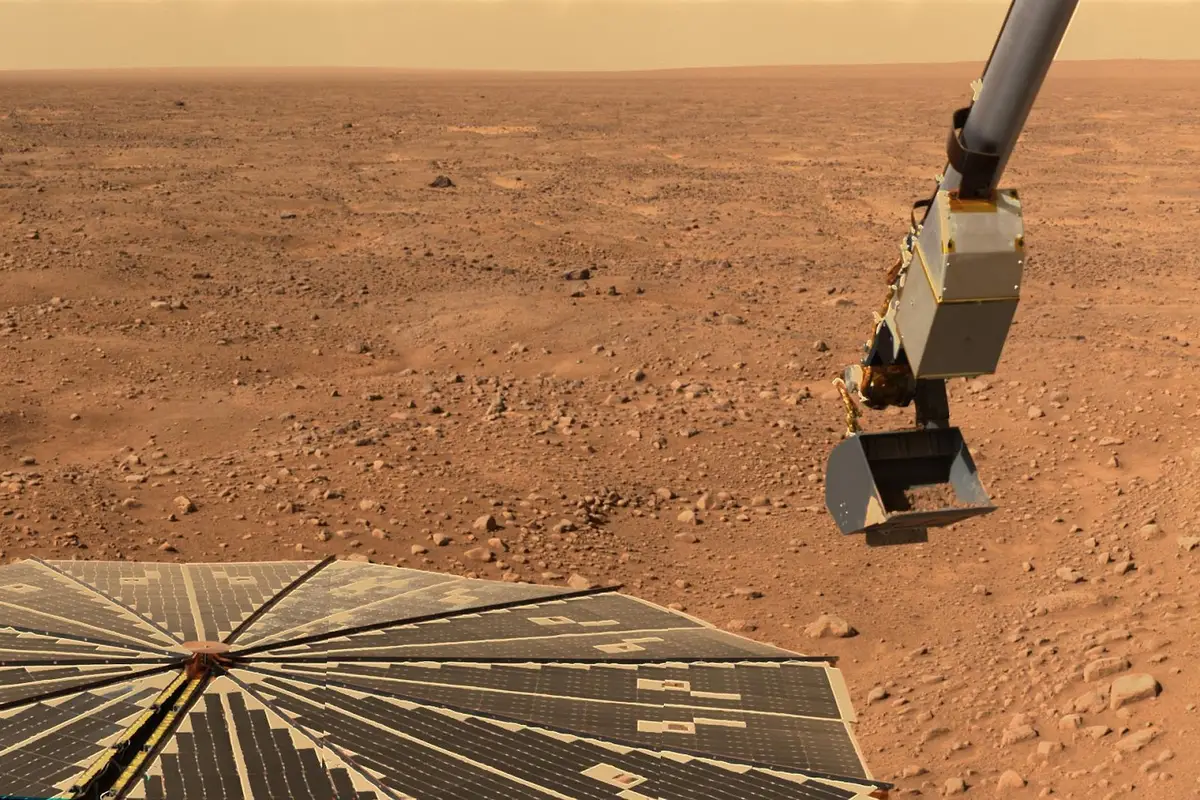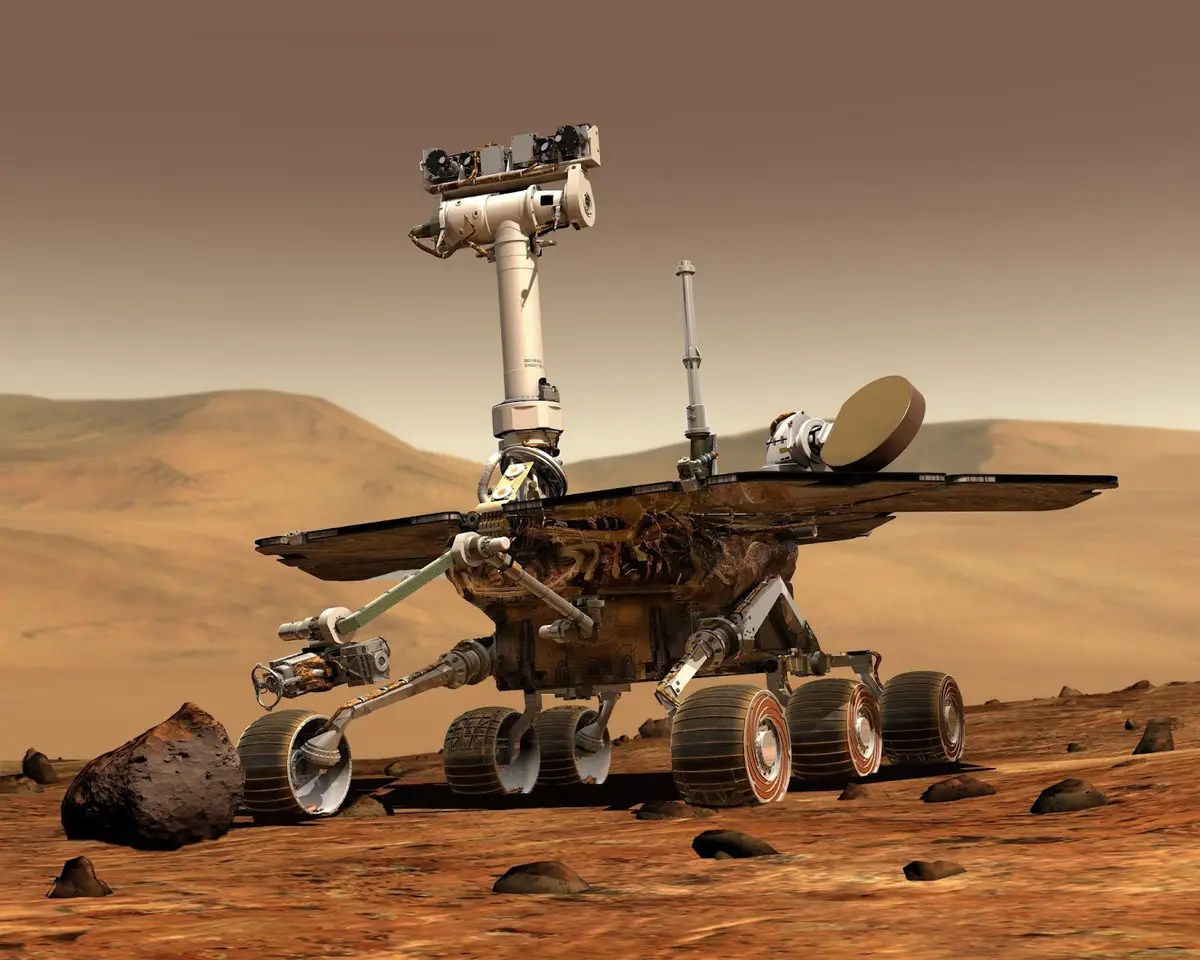![How Many Rovers Are On Mars? [In 2022]](https://journalofcosmology.com/wp-content/uploads/2022/09/How-Many-Rovers-Are-On-Mars-In-2022-.png)
The red planet has always held our fascination. It shares a few similarities with our planet, and scientists are always looking for ways to understand more about it. In order to gather information, over the years, we have sent out several spacecraft to analyze and help us piece together the mysteries of Mars.
Since there is a lag in communication between Earth and Mars, our scientists have used artificial intelligence in the spacecraft sent to the red planet. AI helps the craft navigate the rocky terrain and overcome any obstacle smoothly.
This article will cover how many rovers are on Mars as of 2022 and dive into their details.
Currently Active Red Rovers and Landers
As of 2022, there are six rovers on the red planets. Of these six rovers, only three are active. We lost contact with the other three after they completed their mission.
In addition to the active rovers, there is one active lander on the planet at the moment. The rovers are Curiosity, Perseverance, and Zhurong, and the lander is InSight.
Since the 1970s, several types of spacecraft of different specialties have been sent to Mars. Orbiters took pictures as they revolved around the planet. Landers provided information and photos from the surface. Rovers specialized in traversing the planet’s surface.
Rovers are instrumental in helping scientists understand more about the red planet and its composition. These wheeled spacecraft drive around the planet to different spots and study various aspects of the planet.

Curiosity
The Curiosity rover was launched on November 26, 2011. It landed on the red planet on August 6, 2012. Since then, it has been exploring the planet. The car-sized rover remains the biggest rover built based on size. Its dimensions match that of an SUV.
The active rover has traversed over 16.8 miles on the planet. It is capable of covering a distance of 100 ft per hour. However, it is not consistently in motion.
The rover’s expected operational state was to be one Martian year (687 Earth days). However, it exceeded expectations and is actively working in full force even today.
Mission Goals
Curiosity belongs to NASA’s Mars Science Laboratory (MSL) mission. The objective of this mission was to study the red planet’s environment. The aim was to understand whether the planet once supported microbial life.
The rover came attached with the most advanced set of scientific instruments. These instruments are capable of scrapping loose soil and drilling rocks on the planet to analyze composition and structure.
Unlike its predecessors, this rover did not feature any solar panels. Rather, it had a radioisotope power system.
Curiosity has an autonomous laser that is capable of picking rocks for analysis.
Discoveries
Some of the rover’s notable discoveries include finding out that the Gale Crater was probably a host to life 3.5 billion years ago. It was also responsible for drilling into ‘Sheepbed,’ a mudstone. This discovery in Yellowknife Bay revealed that ancient Mars very likely had the right life-supporting chemistry for living microbes.
Though it detected varying levels of methane in the atmosphere, it has not been able to solve the mystery behind its presence. It also shed some light on the planet’s ancient atmosphere and water content mysteries.
So far, the rover has survived the planet’s obstacles, increasing the likelihood of its future survival and hope for new discoveries.
InSight
The Interior Exploration using Seismic Investigations, Geodesy and Heat Transport, or in short, InSight, is a lander that was designed to thoroughly checkup the red planet since its formation.
It launched from Earth on May 5, 2018, and reached the Martian surface on November 26, 2018.
Mission Goals
Rather than look into soil samples on the surface, this lander studied in-depth the inner structure of Mars—the crust, mantle, and core.
The in-depth analysis of the planet’s interior structure was aimed at understanding how the early rock planets and exoplanets formed over 4 billion years ago and how they have evolved since then.
The lander’s instruments looked for vital signs such as seismology, precision, and heat flow of the planet.
Its goal was also to gain insight into the rate of meteorite impacts and tectonic activity on the planet.
InSight belonged to NASA’s Discovery Program that sought to ask critical queries regarding solar system science.
Discoveries
The lander got to work as soon as it landed, and in its first year, it detected nearly 450 marsquakes. These quakes were much milder and more frequent than expected. Scientists believe the quakes are a result of volcanically active regions on the planet.
The lander captured sounds of unceasing whirlwinds and detected an extremely strong magnetic field in the surface rocks. This magnetic field is a remnant of the planet’s magnetic field from billions of years ago.
Perseverance

Belonging to the Mars Exploration Program, Perseverance was launched on July 30, 2020, and landed on the red planet on February 18, 2021, along with Ingenuity, a robotic helicopter.
The 2,260-pound rover packs state-of-the-art scientific tools to investigate and capture hidden microscopic details within the Martian rocks.
Scientists chose Jezero Crater as the rover’s landing spot because they believe water once flooded the area. It made the area a potential host of microbial life billions of years ago.
Mission Goals
The Perseverance rover’s goal is to look for signs of ancient life on the planet and scan, collect, and store rock and regolith samples so that they can be brought back to Earth. The mission is part of NASA’s Mars Sample Return Campaign.
Discoveries
When the rover began to explore the Jezero Crater, it made unexpected discoveries. Instead of discovering sedimentary rocks, the rover found igneous rocks. This meant lava once filled the crater.
If the collected samples make a successful return trip to Earth, they will be useful in helping us pinpoint major geologic events in the red planet’s history. At present, the rover stores ten sealed tubes with rock samples in eight of them, an atmospheric sample in one, and a control sample in the last one.
The rover completed 515 sols on Mars (529 Earth days) as of 1 August 2022. There is much more left for the rover to discover and analyze.
Zhurong
The Zhurong rover made history as China’s first successful Mars mission. The rover landed on the red planet on May 22, 2021, in the Utopia Planitia region. It was carried by the spacecraft Tianwen-1. After the United States, China is the second country to successfully land and operate a rover on the Martian surface.
A week after it landed, Zhurong began its operations.
Mission Goals
The rover is equipped with all the necessary instruments necessary to help create a complete geological image of Mars. Its aim is to study the planet’s geology, topography, chemical composition, soil structure, rock types and minerals and seek signs of water ice.
The rover was expected to last 90 days. However, it is still actively exploring the Martian surface with the other rovers.
Discoveries
The Mars rover has so far discovered possible evidence of water erosion impact on the surface and wind erosion. Zhurong continues exploring the surface to this date, seeking to solve more mysteries of the red planet.
Former (Inactive) Mars Probes

Over the years, several agencies have sent their probes to Mars to discover and analyze the planet’s mysteries. While we covered the details of active crafts above, it is time to delve into the inactive ones.
Mars 3, Viking 1, Viking 2, Sojourner, Opportunity, Spirit, and Phoenix are all inactive on the Martian surface.
Mars 3
Mars 3 belonged to the Soviet Mars program. It was launched on May 28, 1971. It crash-landed on the planet on December 2, 1971. However, it did not make any discoveries as it ceased to function 110 seconds after landing.
Viking 1
This lander-orbiter craft launched from Earth’s surface on August 20, 1975, and landed on the red planet on July 20, 1976. It successfully operated for six years and 116 days in the Chryse Planitia region of the planet.
It was the first to successfully stick the landing on the Martian surface. Though it was designed to operate for 90 days, it pushed through for much longer than expected.
Its main mission was to seek evidence of life in the landing region. Although it failed this mission, it was instrumental in helping scientists identify Mars as a cold planet, with ancient river beds, evidence of vast flooding, volcanic soil, and a thin atmosphere.
Viking 2
Viking 2 followed Viking 1 almost immediately and landed on the red planet in September 1976. It, too, consisted of an orbiter and a lander. Viking 2 took thousands of images that helped map the Martian surface. It lasted three years and six months before its batteries gave out.
Sojourner
This micro-rover was designed to survive 30 sols. However, it managed to operate for 85 days or 83 sols. The rover landed on the planet on July 4, 1997, in the Ares Vallis region.
It belonged to NASA’s Pathfinder mission and was designed by NASA’s JPL. Its mission was to collect data and demonstrate the use of cheaper technology for space exploration.
Sojourner delivered 16,500 images and data regarding measurements of temperature, atmospheric pressure, and wind. The collective data assisted scientists in deducing how big Martian atmospheric particles were.
Spirit and Opportunity
As part of NASA’s Mars Exploration Rover program, the agency launched twin rovers to Mars. Spirit (MER-2) was launched on June 10, 2003, and landed in the Gusev crater region on January 4, 2004. Opportunity (MER-1) soon followed it and landed inside the Eagle crate at the Meridiani Planum on January 24, 2004.
The twin rovers were expected to operate on the planet for 90 sols. However, Spirit lasted for six years and 77 days, whereas, Opportunity lasted for 15 years.
The Spirit rover helped showed the geological complexity of the Martian surface, covering 4.8 miles from its landing spot. In 2010, all communication officially wound down.
Opportunity covered a record distance of 28.06 miles and made the first discovery of sedimentary rocks outside our planet. We lost contact with the rover in 2018 following a dust storm that lasted over four months with speeds of 60 mph.
Phoenix
This lander launched from the base on August 4, 2007, and landed on Mars on May 25, 2008. It was operational for 161 days. Its main goal was to analyze the Martian arctic for water and look for evidence of habitability.
Phoenix was able to study the planet’s soil, ice and atmosphere for three months. It continued working post its mission date for additional two months before it ceased functioning.
The lander observed snowfall and confirmed the presence of water-ice underneath the planet’s surface.
Frequently Asked Questions
Has Man Ever Stepped Foot on the Martian Surface?
For decades, unmanned exploration missions to Mars have been the primary goal of space programs around the world. As years have gone by and technology has advanced, there is a possibility that someday humans will step foot on Mars.
Space agencies like NASA and CNSA are already in the race to put the first crew on Mars. CNSA plans to launch its first crewed mission to the red planet in 2033, whereas NASA aims for a late 2030 or early 2040s date.
It remains to be seen if the vision will become a reality, given the many challenges that come with such a trip.
Who Is Planning to Launch the Next Mars Rover?
Russia’s Roscomos and the European Space Agency (ESA) get ready to launch the ExoMars rover in 2022. The launch has a window of September 20 to October 1. The initial launch was planned for 2020. However, COVID and technical reasons resulted in a delay.
How Long Is a Day on Mars?
One day on Mars is nearly 40 minutes longer than an Earth day. It is called ‘sol’. A solar day on Mars lasts for 24 hours, 39 minutes and 35 seconds, whereas a sidereal day lasts 24 hours, 37 minutes, and 22 seconds.
